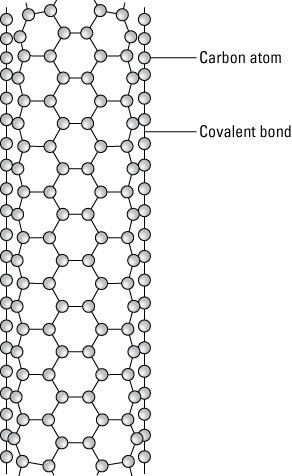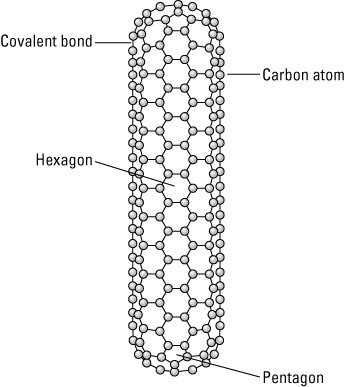Woodward's rules, named after Robert Burns Woodward and also known as Woodward–Fieser rules are several sets of empirically derived rules which attempt to predict the wavelength of the absorption maximum (λmax) in an ultraviolet visible spectrum of a given compound. Inputs used in the calculation are the type of chromophores present, the substituents on the chromophores, and shifts due to the solvent. Examples are conjugated carbonyl compounds,conjugated dienes, and polyenes.
This is a blog to share my study notes and write articles on topics of my interest.
Monday, August 12, 2019
Sunday, August 11, 2019
Infrared spectroscopy
Infrared spectroscopy or vibrational spectroscopy involves the interaction of infrared radiation with matter. It covers a range of techniques, mostly based on absorption spectroscopy. As with all spectroscopic techniques, it can be used to identify and study chemical substances. Samples may be solid, liquid, or gas. The method or technique of infrared spectroscopy is conducted with an instrument called an infrared spectrometer.
Saturday, August 10, 2019
Reserpine
Reserpine is a drug that is used for the treatment of high blood pressure.
Reference https://en.m.wikipedia.org/wiki/Reserpine
Reserpine has also been used for relief of psychotic symptoms.Reserpine is one of dozens of indole alkaloids isolated from the plant Rauvolfia serpentina. In the rauwolfia plant, tryptophan is the starting material in the biosynthetic pathway of reserpine.
Reference https://en.m.wikipedia.org/wiki/Reserpine
Friday, August 9, 2019
Glycogen
Glycogen is a multibranched polysaccharide of glucose that serves as a form of energy storage in animals,fungi, and bacteria.The polysaccharide structure represents the main storage form of glucose in the body.In humans, glycogen is made and stored primarily in the cells of the liver and skeletal muscle. In the liver, glycogen can make up 5–6% of the organ's fresh weight, and the liver of an adult weighing 70 kg can se roughly 100–120 grams of glycogen.In skeletal muscle, glycogen is found in a low concentration and the skeletal muscle of an adult weighing 70 kg stores roughly 400 grams of glycogen. The amount of glycogen stored in the body—particularly within the muscles and liver—mostly depends on physical training, basal metabolic rate, and eating habits. Small amounts of glycogen are also found in other tissues and cells, including the kidneys, red blood cells,white blood cells,and glial cells in the brain.
Glycogen is the analogue of starch, a glucose polymer that functions as energy storage in plants. It has a structure similar to amylopectin, but is more extensively branched and compact than starch. Both are white powders in their dry state. Glycogen is found in the form of granules in the cytosol/cytoplasm in many cell types, and plays an important role in the glucose cycle.
Glycogen is the analogue of starch, a glucose polymer that functions as energy storage in plants. It has a structure similar to amylopectin, but is more extensively branched and compact than starch. Both are white powders in their dry state. Glycogen is found in the form of granules in the cytosol/cytoplasm in many cell types, and plays an important role in the glucose cycle.
Thursday, August 8, 2019
Oligomer
Oligomers are low molecular weight polymers comprising a small number of repeat units whose physical properties are significantly dependent on the length of the chain.In biochemistry, an oligomer usually refers to a macromolecular complex formed by non-covalent bonding of a few macromolecules like proteins or nucleic acids. In this sense, a homo-oligomer would be formed by few identical molecules and by contrast, a hetero-oligomer would be made of more than one, different, macromolecules. Collagen is an example of a homo-oligomeric protein that is composed of three identical protein chains.
Wednesday, August 7, 2019
Caffeine
Caffeine is a central nervous system (CNS) stimulant of the methylxanthine class. It is the world's most widely consumed psychoactive drug.
Caffeine is a bitter, white crystalline purine, a methylxanthine alkaloid, and is chemically related to the adenine and guanine bases of deoxyribonucleic acid (DNA) and ribonucleic acid (RNA).Caffeine can have both positive and negative health effects. It can treat and prevent the premature infant breathing disorders bronchopulmonary dysplasia of prematurity and apnea of prematurity.Caffeine can increase blood pressure and cause vasoconstriction.Coffee and caffeine can affect gastrointestinal motility and gastric acid secretion.
Reference
https://en.m.wikipedia.org/wiki/Caffeine
Tuesday, August 6, 2019
Cyanocobalamin
Cyanocobalamin is a manufactured form of vitamin B 12. It used to treat vitamin B12 deficiency. This may occur in pernicious anemia and bowel cancer.It is used by mouth, by injection into a muscle.
Possible side effects of cyanocobalamin injection include allergic reactions such as hives, difficult breathing; redness of the face; swelling of the arms, hands, feet, ankles or lower legs; extreme thirst; and diarrhoea. Less-serious side effects may include headache, dizziness, leg pain, itching, or rash.Cyanocobalamin is one of the most widely manufactured vitamers in the vitamin B
12 family because cyanocobalamin is the most air-stable of the B 12 forms. It is the easiest[citation needed] to crystallize and therefore easiest to purify after it is produced by bacterial fermentation, or synthesized in vitro. It can be obtained as dark red crystals or as an amorphous red powder. Cyanocobalamin is hygroscopic in the anhydrous form, and sparingly soluble in water. Cyanocobalamin is commercially prepared by bacterial fermentation. Fermentation by a variety of microorganisms yields a mixture of methyl-, hydroxo- and adenosylcobalamin. These compounds are converted to cyanocobalamin by addition of potassium cyanide in the presence of sodium nitrite and heat.
12 family because cyanocobalamin is the most air-stable of the B 12 forms. It is the easiest[citation needed] to crystallize and therefore easiest to purify after it is produced by bacterial fermentation, or synthesized in vitro. It can be obtained as dark red crystals or as an amorphous red powder. Cyanocobalamin is hygroscopic in the anhydrous form, and sparingly soluble in water. Cyanocobalamin is commercially prepared by bacterial fermentation. Fermentation by a variety of microorganisms yields a mixture of methyl-, hydroxo- and adenosylcobalamin. These compounds are converted to cyanocobalamin by addition of potassium cyanide in the presence of sodium nitrite and heat.
Monday, August 5, 2019
Thiamine
Thiamine is a vitamin, also called vitamin B1. Vitamin B1 is found in many foods including yeast, cereal grains, beans, nuts, and meat. It is often used in combination with other B vitamins, and found in many vitamin B complex products. Vitamin B complexes generally include vitamin B1, vitamin B2 , vitamin B3 ,vitamin B5 , vitamin B6 (pyridoxine), vitamin B12 and folic acid. However, some products do not contain all of these ingredients and some may include others, such as biotin, para-aminobenzoic acid (PABA), choline bitartrate, and inositol.
It is a nutrient that is not synthesized in the human body. Food sources of thiamine include whole grains, legumes, and some meats and fish. Grain processing removes much of the thiamine content, so in many countries cereals and flours are enriched with thiamine. Thiamine is a building block required for energy production and glucose metabolism.
Thiamine is used to treat thiamine deficiency which when severe can prove fatal. In less severe cases, non-specific signs include malaise, weight loss, irritability and confusions.
Reference https://www.webmd.com/vitamins/ai/ingredientmono-965/thiamine-vitamin-b1
https://en.m.wikipedia.org/wiki/Thiamine
Sunday, August 4, 2019
Carbon nanotube
Carbon nanotubes (CNT) are a class of nanomaterials that consist of a two-dimensional hexagonal lattice of carbon atoms, bent and joined in one direction so as to form a hollow cylinder.
Carbon nanotubes are composed of carbon atoms linked in hexagonal shapes, with each carbon atom covalently bonded to three other carbon atoms. Carbon nanotubes have diameters as small as 1 nm and lengths up to several centimeters. Although, like buckyballs, carbon nanotubes are strong, they are not brittle. They can be bent, and when released, they will spring back to their original shape.
One type(a) of carbon nanotube has a cylindrical shape with open ends.
Another type (b)of nanotube has closed ends, formed by some of the carbon atoms combining into pentagons on the end of the nanotube.
Carbon nanotubes are composed of carbon atoms linked in hexagonal shapes, with each carbon atom covalently bonded to three other carbon atoms. Carbon nanotubes have diameters as small as 1 nm and lengths up to several centimeters. Although, like buckyballs, carbon nanotubes are strong, they are not brittle. They can be bent, and when released, they will spring back to their original shape.
One type(a) of carbon nanotube has a cylindrical shape with open ends.
Another type (b)of nanotube has closed ends, formed by some of the carbon atoms combining into pentagons on the end of the nanotube.
Reference
https://www.understandingnano.com/what-are-carbon-nanotubes.html
Saturday, August 3, 2019
Coronene
Coronene is a polycyclic aromatic hydrocarbon (PAH) comprising six peri-fused benzene rings. Its chemical formula is C 24H 12. It is a yellow material that dissolves in common solvents including benzene, toluene, and dichloromethane. It has been used as a solvent probe, similar to pyrene.
Reference https://en.m.wikipedia.org/wiki/Coronene
It can be described by 20 resonance structures or by a set of three mobile Clar sextets. Coronene occurs naturally as the very rare mineral carpathite, which is characterized by flakes of pure coronene embedded in sedimentary rock. Coronene is produced in the petroleum-refining process of hydrocracking, where it can dimerize to a fifteen ring PAH, trivially named "dicoronylene".
Coronene has been used in the synthesis of graphene. For example, coronene molecules evaporated onto a copper surface at 1000 degrees Celcius will form a graphene lattices.Reference https://en.m.wikipedia.org/wiki/Coronene
Friday, August 2, 2019
Nitrogen fixation
Nitrogen fixation is a process by which nitrogen in the air is converted into ammonia (NH3) or related nitrogenous compounds. Biological nitrogen fixation converts N2 into ammonia, which is metabolized by most organisms. Nitrogen fixation is essential for life because fixed inorganic nitrogen compounds are required for the biosynthesis of all nitrogen-containing organic compounds, such as amino acids and proteins. As part of the nitrogen cycle, it is essential for agriculture and the manufacture of fertilizer. It is also, indirectly, relevant to the manufacture of all chemical compounds that contain nitrogen, which includes explosives, most pharmaceuticals, and dyes. Nitrogen fixation is carried out naturally in the soil by a wide range of microorganisms.Nitrogen fixation also occurs between some termites and fungi. It also occurs naturally in the air by means of NOx production by lightning. All biological nitrogen fixation is effected by enzymes called nitrogenases. These enzymes contain iron.
Reference https://en.m.wikipedia.org/wiki/Nitrogen_fixation
Reference https://en.m.wikipedia.org/wiki/Nitrogen_fixation
Thursday, August 1, 2019
Biomolecule
A biomolecule or biological molecule is a loosely used term for molecules and ions present in organisms that are essential to one or more typically biological processes, such as cell division, morphogenesis, or development.Biomolecules include large macromolecules such as proteins, carbohydrates, lipids, and nucleic acids, as well as small molecules such as primary metabolites, secondary metabolites, and natural products. A more general name for this class of material is biological materials. Biomolecules are usually endogenous, produced within the organisms. Most biomolecules are organic compounds, and just four elements—oxygen, carbon, hydrogen, and nitrogen—make up 96% of the human body's mass. But many other elements, such as the various biometals, are present in small amounts.
Reference https://en.m.wikipedia.org/wiki/Biomolecule
Reference https://en.m.wikipedia.org/wiki/Biomolecule
Subscribe to:
Comments (Atom)







